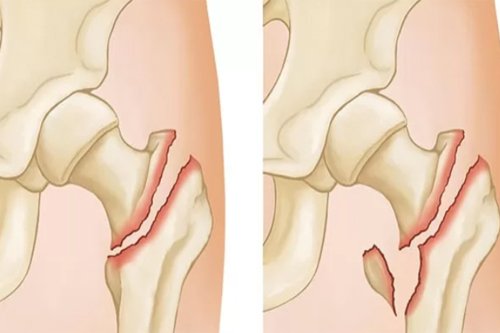Meet Our Doctor
Dr. Vrushabh Kumbhare
Orthopedic and Joint Replacement Surgeon
Educational details:
- M.B.B.S. (4.5 years +1 year Internship): August 2009 - April 2015 N K P Salve institute of medical sciences and research centre, Digdoh hills, Nagpur, Maharashtra (Under Maharashtra University of Health Sciences, Nashik)
- M.S. Orthopedics(3 years): May 2017- August 2020 Jawaharlal Nehru Medical Collage, Sawangi (Meghe) (Under Datta Meghe Institute of Medical Sciences Deemed to be University)
Experience:
- Senior resident: (September 2019 – May 2021) Department of Orthopaedics, Jawaharlal Nehru Medical Collage, Sawangi (Meghe)


Dr. Vrushabh Kumbhare
Orthopedic and Joint Replacement Surgeon
Joint Fracture In Nagpur
“Joint fracture” is not a term commonly used in medical terminology. Joints are areas where two or more bones meet, and fractures typically refer to breaks or cracks in bones. It’s more accurate to describe fractures based on the specific bone involved. However, if someone is using the term “joint fracture,” they might be referring to a fracture that extends into or involves a joint. Feel free to visit our clinic and schedule an appointment.
If you have concerns about a potential joint fracture, it’s essential to consult with a healthcare professional who can provide a proper diagnosis based on clinical evaluation and imaging studies like X-rays. The treatment plan would then depend on the specific details of the fracture and its impact on the joint.

Types of Joint Fracture
Intra-Articular Fracture:
- Thus, This type of fracture involves the joint surface. The break extends into the articular cartilage within the joint. Intra-articular fractures can impact the alignment and function of the joint.
Extra-Articular Fracture:
- Once, Extra-articular fractures occur outside the joint itself, affecting the bones adjacent to the joint. These fractures may still impact joint function and stability, depending on the proximity to the joint.
Avulsion Fracture:
- An avulsion fracture occurs when a small piece of bone is pulled away from the main bone due to the force of a ligament or tendon. Therefore, This can happen near a joint where a strong ligament or tendon attaches.
Displaced Fracture:
- A displaced fracture occurs when the bone fragments on either side of the fracture are not aligned properly.Thus, This can significantly affect joint function and may require realignment through surgical intervention.
Procedure for joint fracture management
Medical Evaluation:
- Thus, Seek prompt medical attention if you suspect a joint fracture. A healthcare professional, often an orthopedic specialist, will conduct a thorough examination, including a review of symptoms, physical assessment, and possibly imaging studies such as X-rays or CT scans to confirm the presence and extent of the joint fracture.
Diagnosis:
- Once, Based on the medical evaluation and imaging results, the healthcare provider will diagnose the type and severity of the joint fracture. This information is crucial for determining the appropriate treatment plan.
Immobilization:
- Immobilization is often an initial step in managing joint fractures. This may involve the use of splints, braces, or casts to stabilize the joint and prevent further movement, allowing the bones to heal.
Pain Management:
- Firstly, Pain relief measures, such as over-the-counter or prescription pain medications, may be prescribed to manage discomfort associated with the joint fracture.
Reduction:
- Thus, Depending on the type and severity of the joint fracture, reduction may be necessary. Reduction involves the realignment of the fractured bones. There are two main types:
- Closed Reduction: The bones are manipulated into alignment without surgery.
- Open Reduction:
Once, Surgical intervention is performed to realign and stabilize the fractured bones.
- Thus, Depending on the type and severity of the joint fracture, reduction may be necessary. Reduction involves the realignment of the fractured bones. There are two main types:
Surgery:
- In certain cases, surgical intervention may be required, especially for complex joint fractures, fractures involving joint surfaces, or fractures with significant displacement. Thus, Surgical procedures may include the use of internal fixation devices (such as plates, screws, or rods) to stabilize the joint.
Benefits of joint tretament
Pain Relief:
- Effective joint treatment aims to alleviate pain, providing relief for individuals experiencing discomfort due to various conditions such as arthritis, injuries, or inflammation.
Improved Functionality:
- Joint treatment can enhance the functionality of the affected joint and surrounding muscles. This is particularly important for individuals with conditions like osteoarthritis or after joint injuries.
Enhanced Mobility:
- Successful joint treatment can lead to increased joint mobility and improved range of motion, allowing individuals to move more comfortably and perform daily activities with greater ease.
Prevention of Further Damage:
- Timely and appropriate joint treatment can help prevent the progression of certain conditions, reducing the risk of further damage to the joint and surrounding structures.
Better Quality of Life:
- Alleviating joint pain and improving joint function contribute to an overall improvement in an individual’s quality of life, enabling them to participate in work, recreational activities, and social interactions more comfortably.
